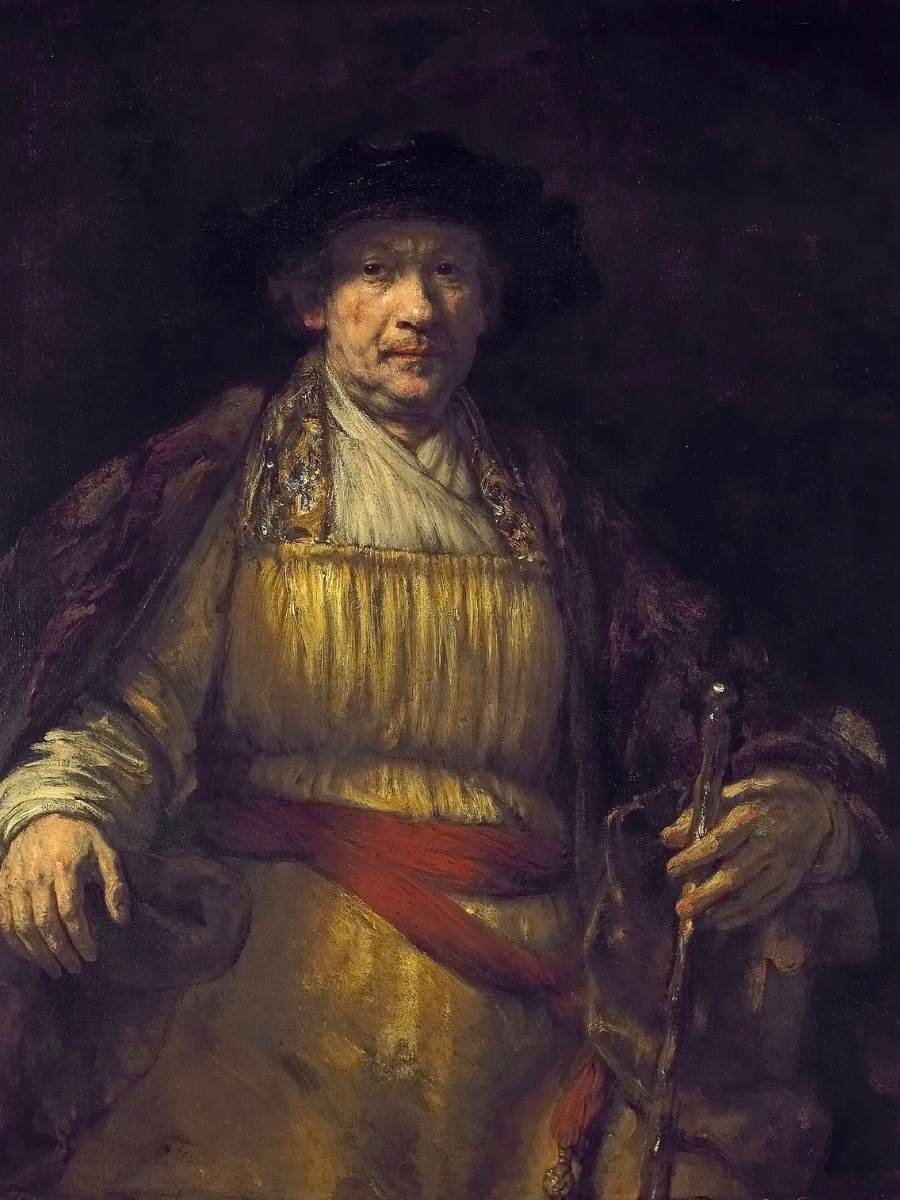New York, Frick Collection
On July 14th 1656 Rembrandt applied to the High Court of Holland for cessio bonorum – a voluntary surrender of goods to creditors. A few days later an inventory of his effects was drawn up which illustrated part of the problem – lavish spending on a splendid collection of art – a collection which he had amassed to some extent as an investment but the sale of which could not save him from bankruptcy.
Biographers of Rembrandt writing at around the turn of the 19th century and into the 20th, created a romantic vision of Rembrandt after his bankruptcy as a lonely and forgotten genius. It is true that his financial situation never really recovered after 1656 but recent research has established that he was far from forgotten. Indeed, in 1667, towards the end of Rembrandt’s life, he received a visit from Cosimo de’ Medici, later the Grand Duke of Tuscany, who was visiting the Netherlands on his Grand Tour. Cosimo met numerous artists and visited 15 in their studios but when writing his travel journal he only referred to three as ‘famoso,’ Rembrandt being one of them.
Rembrandt produced more than 40 self portraits during his life – a surviving quantity unique in the history of western art. One might ask why he painted so many. Perhaps the most important reason is that there was a thriving market for paintings of famous men and it seems that self portraits were especially collectable in that they were both a representation of a famed individual and at the same time an example of the reason for that fame. It is known that two of his self portraits were in royal collections during his lifetime.
So this self portrait, painted two years after the crisis in his financial affairs may be seen as an example of the way that he continued to trade on his fame. It is the largest of all the self portraits and one of the most impressive – the life size figure is seated magisterially – his bulk accentuated by the swathes of exotic garb. His left hand (his right hand in reality, transposed via the intervention of the mirror), cursorily painted (as in most self portraits, because of the difficulty in depicting the hand which is engaged in the act of painting), holds a cane with a silver top. The painting is realised in a typically free style; creases, in particular on the right sleeve, are often indicated with single strokes of the brush.
He is dressed (as so often in his other self portraits) in 16th-century clothes, which he seems to have collected. A brocade scarf is tucked within a yellow jerkin with a low horizontal neckline, typical of the early 16th century, made of indeterminate material. A red sash encompasses an ample waist and on his head sits a dark, large brimmed hat. This exotic ensemble imparts an oriental feel to the painting. But it is the head and eyes to which the viewer’s attention constantly returns. As our gaze plays on the profoundly sympathetic features of Rembrandt’s face, we realise that his eyes, even though partially shaded by the brim of the hat, and formed by nothing more than paint, seem to be engaged in a two-way relationship with us – they seem to search for the very soul of the beholder – to burn into one’s psyche. And it is this quality, the mysterious facility of the late self portraits, to speak directly to us across the centuries – to speak of the common experience of a shared humanity which makes them one of the crowning achievements of western art.
Contemporary Works
1658 Pieter der Hooch: The Courtyard of a House in Delft, London, National Gallery
1659 Diego Velázquez: Infanta Margarita Teresa in a Blue Dress, Vienna, Kunsthistorisches Museum
Categories:
- Baroque
- Dutch Golden Century
- Portraiture

